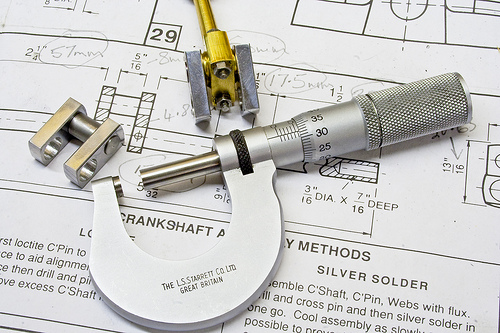The Power of Design: What design projects can teach our students—and us
By Cynthia J. Brame, Assistant Director This year, the CFT has adopted a “Students as Producers” theme, exploring ways that instructors can scaffold their classes to help students do meaningful, creative work. Design projects, the linchpin of any engineering curriculum, illustrate some of the key benefits and lessons of helping your students be producers.
This year, the CFT has adopted a “Students as Producers” theme, exploring ways that instructors can scaffold their classes to help students do meaningful, creative work. Design projects, the linchpin of any engineering curriculum, illustrate some of the key benefits and lessons of helping your students be producers.

I’ve been learning a lot about design projects recently, working with Dr. Joel Barnett, Associate Professor of thePractice in Mechanical Engineering. (I got an introduction this fall from Dr. Tom Withrow, who talked about his students’ work creating an amphibious vehicle.) Joel and I recently led a session on introducing research and design into courses at GradSTEP, the CFT’s annual Graduate Student Teaching Event for Professional Development. Joel, who incorporates design projects in almost all the courses he teaches, talked about the key elements he incorporates into capstone classes that are focused on design projects.
Real problems, real partners.
Mechanical Engineering seniors work on design projects to solve problems brought to them by a variety of partners, from companies like GM and Hershey to various Vanderbilt labs. In each case, the problem posed to the students is a real problem—and they have to find a solution within real budgetary, time, and other constraints.
Professionalism is key.
Joel runs the course like a company. He is the chief engineer, while his students are the staff engineers. He has the students sign and date a “terms of employment” document that spells out the expectations for the students’ behavior, including the need for them to take the initiative for moving the project forward and an absolute prohibition against whining. Class meetings are run like staff meetings, beginning with a call to order and ending with a movement to adjourn, with students having full responsibility for presentations and discussions during class time.
Real problems require collaboration.
As with most significant problems, these projects require a team. Groups of four or five students collaborate to develop a workable solution to the customer’s problem, typically by dividing the problem into manageable tasks for which individuals take responsibility. Real solutions require that each team member develop his or her piece and work with the other team members to ensure that the project comes together as a whole. Importantly, collaboration doesn’t end at the boundary of the team; in the class meetings, different teams will ask questions and offer suggestions that help move each others’ projects forward.
Good questions are more important than answers.
Each project begins with a problem described by the customer, who necessarily gives information that seems important to him or her—but not all the information the engineering students need to find a workable solution. Joel describes asking the right questions as the most important part of finding a solution that will solve your customer’s problem. He likes to give the example of the broken antique bed. There are two different customers for this problem, one a “typical granny” who inherited the bed from her Revolutionary War ancestors and the other a “typical engineer” who bought the bed at a garage sale for $25. The two customers impose different constraints on workable solutions, which the students can only discover if they ask the right questions. For example, a key question for the broken antique bed problem is “Who will implement the design?” In the case of “typical granny,” it is a local handyman who has a woodworking shop, while in the case of “typical engineer,” the customer will implement it using his machine shop. Thus the constraints imposed by the answers dictate very different design solutions.
How does Joel help the students learn to ask good questions? In between meeting of the full class, Joel meets with each design group to review their progress, and he describes these sessions as question-generating sessions. Thus he teaches by example—and by prompting.
Clear communication is vital.
A potential solution is no good if it’s not conveyed to the customer. To help his students learn to communicate as clearly as possible, Joel has them report out their progress regularly in class meetings in formal presentations. I recently attended one such meeting and got to learn about projects in development for Vanderbilt Motosport , NuAg Agricultural Systems, and Dr. Jason Mitchell’s microscopy laboratory. I was very impressed with the students’ clear description of the problem, the breakdown of their project into smaller pieces, and their progress to date. Even to a non-engineer like me, the descriptions the students gave were clear and informative—telling me that they’ve taken this lesson to heart.
The key elements Joel has identified are reflected in the literature (see, for example, Amon et al., 1996; Wood et al., 2001; Dym et al., 2005), and for the most part, can be incorporated in smaller projects in classes that precede a capstone design course. In lower level classes, for example, Joel may skip the “real partners” piece but pose smaller problems that students can work through in a few lab sessions—while learning the importance of professionalism, collaboration, questioning, and communication. Just as important, these lessons are not limited to engineering classes. Whether we think of it as design, research, or problem-solving, most of us use these skills in our professional lives and want our students to learn them as well. Adapting the design model to our classes may be a powerful way to do it.

Leave a Response